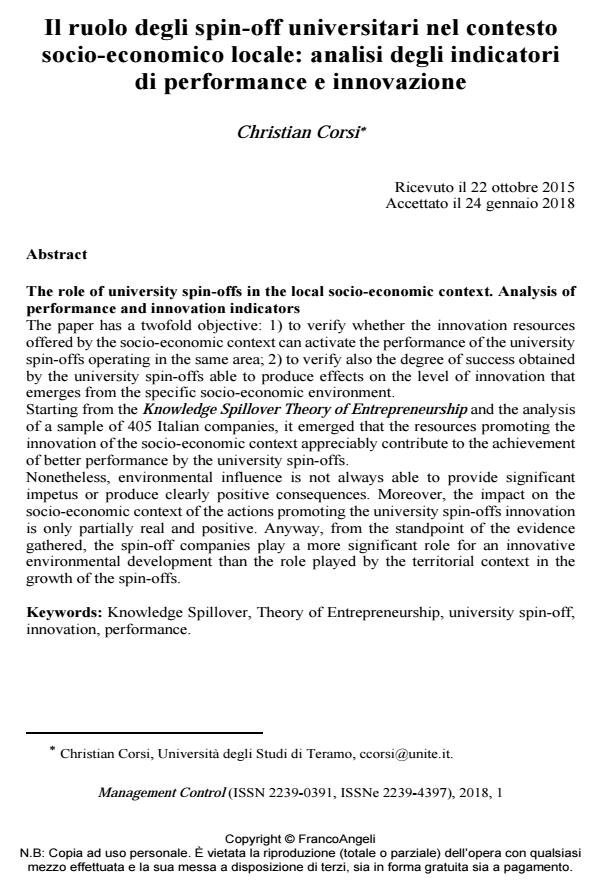The role of university spin-offs in the local socio-economic context. Analysis of performance and innovation indicators
Journal title MANAGEMENT CONTROL
Author/s Christian Corsi
Publishing Year 2018 Issue 2018/1
Language Italian Pages 22 P. 73-94 File size 283 KB
DOI 10.3280/MACO2018-001004
DOI is like a bar code for intellectual property: to have more infomation
click here
Below, you can see the article first page
If you want to buy this article in PDF format, you can do it, following the instructions to buy download credits

FrancoAngeli is member of Publishers International Linking Association, Inc (PILA), a not-for-profit association which run the CrossRef service enabling links to and from online scholarly content.
The paper has a twofold objective: 1) to verify whether the innovation resources offered by the socio-economic context can activate the performance of the university spin-offs operating in the same area; 2) to verify also the degree of success obtained by the university spin-offs able to produce effects on the level of innovation that emerges from the specific socio-economic environment. Starting from the Knowledge Spillover Theory of Entrepreneurship and the analysis of a sample of 405 Italian companies, it emerged that the resources promoting the innovation of the socio-economic context appreciably contribute to the achievement of better performance by the university spin-offs. Nonetheless, environmental influence is not always able to provide significant impetus or produce clearly positive consequences. Moreover, the impact on the socio-economic context of the actions promoting the university spin-offs innovation is only partially real and positive. Anyway, from the standpoint of the evidence gathered, the spin-off companies play a more significant role for an innovative environmental development than the role played by the territorial context in the growth of the spin-offs.
Keywords: Knowledge Spillover, Theory of Entrepreneurship, university spin-off, innovation, performance
- L'origine accademica condiziona le pratiche di earnings management? Un'analisi sugli spin-off universitari Antonio Prencipe, in MANAGEMENT CONTROL 2/2025 pp.205
DOI: 10.3280/MACO2025-002010
Christian Corsi, Il ruolo degli spin-off universitari nel contesto socio-economico locale: analisi degli indicatori di performance e innovazione in "MANAGEMENT CONTROL" 1/2018, pp 73-94, DOI: 10.3280/MACO2018-001004